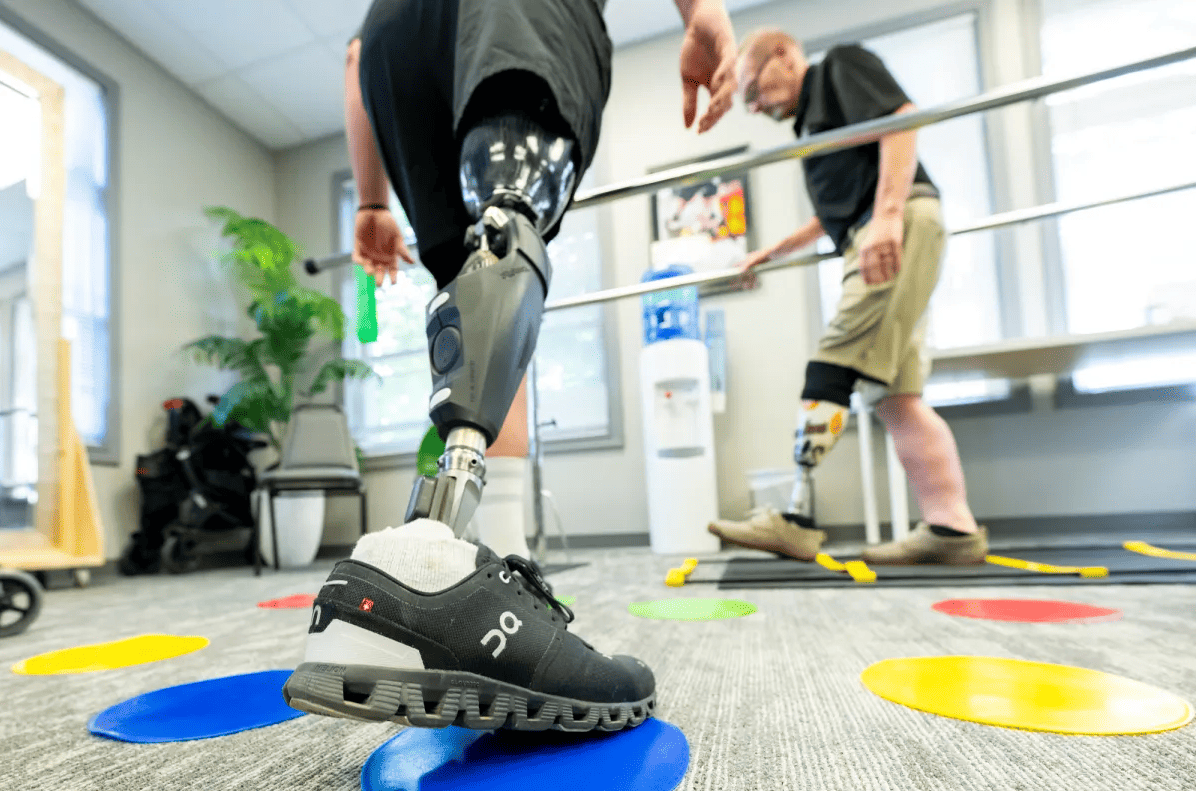They lost limbs. Now, they’re learning to walk again.
(MIRROR INDY) — The treadmill hummed. Parallel bars creaked. Van Halen’s “Jump” blasted from a speaker.
In the middle of it all was Curtis Wainman, a physical therapist who functioned like a conductor, pointing from station to station, shouting instructions and words of encouragement.
“I want you dancing for me,” he called to Lorey McKown, a 60-year-old from Indianapolis who had an amputation after complications with diabetes.
“You got this brother, this will help you stand tall on that walker,” he said to Pete Keys, an 81-year-old who lost his leg after cancer and an accident.
“You’re looking good,” he told Brody Dell, a 28-year-old former college football player who survived a head-on car crash.
Each person in the room had lost at least one limb. They came from across the city and suburbs to Kenney Orthopedics just over the county line into Carmel. The free exercise classes provide specialized care they can’t get at other gyms or otherwise afford.
Indiana ranks as one of the worst states in the country for limb loss because of high rates of diabetes and vascular disease — leading to more and more patients who need help walking again. Diabetes is linked to nerve damage and peripheral artery disease, which increases the risk of infection or tissue death.
In severe cases, amputation is the only option — but there isn’t always long-term support for what comes after.
“Most people have had their amputation but don’t know what to expect next,” said Regan Johnson, a wound care physical therapist at IU Health’s Center for Limb Loss. “If you don’t have access to physical therapy or you have a therapy cap, it can be harder to figure out how to use those legs.”
Wainman echoed her.
“People are being given very short plans of care and as soon as they’re not making enough progress, insurance doesn’t authorize any more visits,” Wainman told Mirror Indy. “The majority of people are left sitting at home in a wheelchair and the prosthesis doesn’t get used.”
His free classes are meant to fill the gap and get people moving again with a community that knows what they’re going through.
“If you’re at a regular gym you’re just kind of on your own,” said Pam Hamer, a 63-year-old from Westfield with a leg amputation. “Here, there’s somebody who can help here if you, God forbid, you fall or your leg falls off.”
At the end of an hour-long session in May, at least one prosthetic leg was lying on the ground.
“That’s how you know you worked hard,” Wainman said. He went to help reattach it.
Classes are held on Wednesdays and Thursdays and are limited to 10 people. An RSVP is required at least 24 hours in advance. Call or text 309-657-6032 for more information.
Mirror Indy reporter Mary Claire Molloy covers health. Reach her at 317-721-7648 or email maryclaire.molloy@mirrorindy.org. Follow her on X @mcmolloy7.
